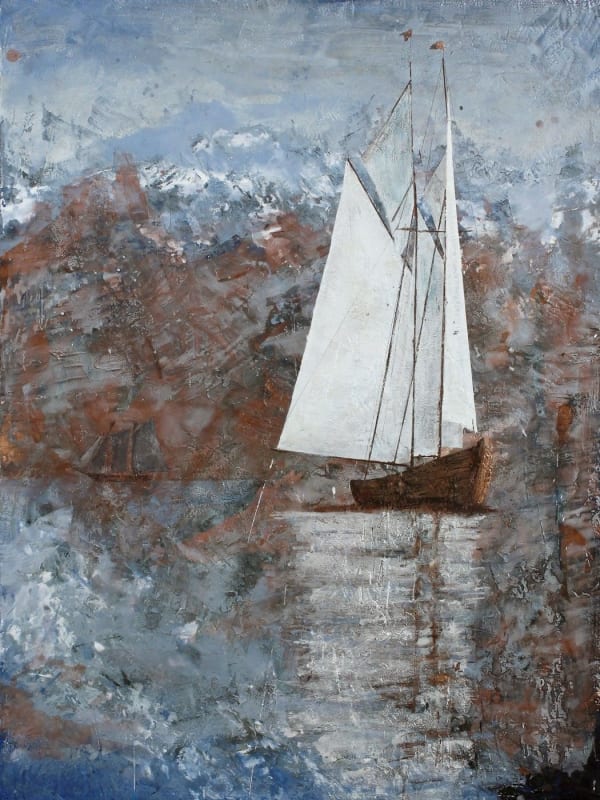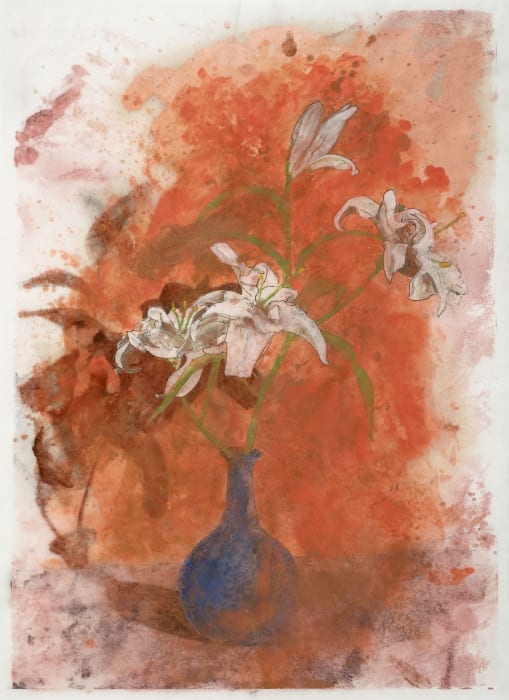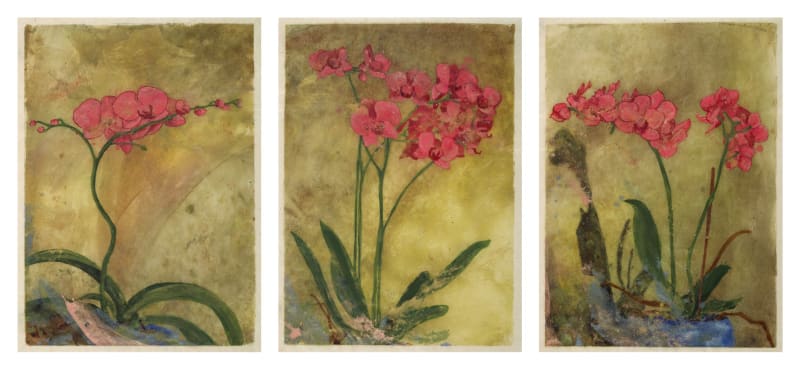Alexandre Masino
-
 À l'écoute du visible I, 202122 x 16 in.
À l'écoute du visible I, 202122 x 16 in. -
 Capter le soleil I, 202118 x 22 in.
Capter le soleil I, 202118 x 22 in. -
 Eau mémoire, 201667 x 50 in.
Eau mémoire, 201667 x 50 in. -
 L'accueil du réel I, 202122 x 16 in.
L'accueil du réel I, 202122 x 16 in. -
 La porte du jadis, 201023 x 31 1/2 in.
La porte du jadis, 201023 x 31 1/2 in. -
 La première lumière, 201932 x 23 in.
La première lumière, 201932 x 23 in. -
 La Première lumière I, 202122 x 16 in.
La Première lumière I, 202122 x 16 in. -
 Le jour advient I, 202116 x 22 in.
Le jour advient I, 202116 x 22 in. -
 Le prisme du temps I, 202122 x 48 in.
Le prisme du temps I, 202122 x 48 in. -
 Le prisme du temps II, 202122 x 48 in.
Le prisme du temps II, 202122 x 48 in. -
 Le sable du temps (sfumato), 201332 x 46 in.
Le sable du temps (sfumato), 201332 x 46 in. -
 Les étreintes de nuit III, 201918 1/2 x 17 in.
Les étreintes de nuit III, 201918 1/2 x 17 in. -
 Les mémoires d'or, 201653 x 37 in.
Les mémoires d'or, 201653 x 37 in. -
 Muse VI, 201918 1/2 x 17 in.
Muse VI, 201918 1/2 x 17 in. -
 Naviguer le sol I, 202118 x 12 in.
Naviguer le sol I, 202118 x 12 in. -
 Naviguer le sol II, 202118 x 12 in.
Naviguer le sol II, 202118 x 12 in. -
 Naviguer le sol III, 202118 x 12 in.
Naviguer le sol III, 202118 x 12 in. -
 Notre mythologie, 201916 x 23 in.
Notre mythologie, 201916 x 23 in. -
 Poussière d'étoiles XII, 201824 x 48 in.
Poussière d'étoiles XII, 201824 x 48 in. -
 Poussières d'étoiles XI, 201824 x 48 in.
Poussières d'étoiles XI, 201824 x 48 in. -
 Poussières d'étoiles XIII, 201924 x 48 in.
Poussières d'étoiles XIII, 201924 x 48 in. -
 Prendre la Terre à témoin (Ehon), 201814 1/4 x 22 3/4 in.
Prendre la Terre à témoin (Ehon), 201814 1/4 x 22 3/4 in. -
 Rayonner I, 202122 x 16 in.
Rayonner I, 202122 x 16 in. -
 Une présence à la pensée I, 202122 x 16 in.
Une présence à la pensée I, 202122 x 16 in. -
 Xenia, 201626 x 36 in.
Xenia, 201626 x 36 in. -
 Zénith et Nadir, 201664 x 48 in.
Zénith et Nadir, 201664 x 48 in.
"Masino creates encaustic paintings where the richness, sensuality and versatility of the medium echo a minimal and contemplative imagery. Whether he uses landscapes, still lifes or nudes, we can relate his subject matters to some “intimate immensity”."
Alexandre Masino’s paintings border between mimesis and invention; responding to observed reality, memory and imaginative perception. The transition between what is real, remembered or imagined creates a fertile territory for the artist, fully understanding that art derives from art. The journey undertaken by the artist is not only a journey through the world but beyond time. The continent that we travel is the continent of art where human history and experience are fundamental.
Masino’s approach is foremost pictorial and is deeply rooted in the constant metamorphosis inherent to the physical act of looking. A painting must offer many different realities according to the distance from which it is viewed and the ambient lighting hitting the surface. Many painters have evoked this very instant when the painting “rises”, when it “happens” and suddenly takes all its meaning. In Masino’s work this moment may only happen when one takes the time to look and place the subject in relation with the background, the light with the shadows, the image and the surface, and all these elements in relation with the complete picture.
Masino creates encaustic paintings where the richness, sensuality and versatility of the medium echo a minimal and contemplative imagery. Whether he uses landscapes, still lifes or nudes, we can relate his subject matters to some “intimate immensity”. His use of encaustic, with its physicality, impasto and transparencies, allows him to create figurative works in which the gesture, the actual act of painting, is just as important and meaningful as the depicted subject. In this regard we can feel that he is compelled by the inevitable dualism between matter and meaning that we find at the core of painting. Consequently his work focuses on this infinite moment where these realities oscillate.
"My recent work consists of series of landscapes and still lifes painted exclusively with encaustic. This technique, which dates back from ancient Greece, uses dry pigments incorporated to melted beeswax.
The Synecdoque is a figure of speech which takes a significant part of a subject to express the whole. This approach is particularly representative of my recent production, which investigate the mundane in order to extrapolate a larger meaning. In this sense, to paint "mountains and water" is in fact to paint humankind. Not in its physicality but on a metaphysical level, while being sensitive to one's rhythm, approach, tourments, contradictions, desires, dreams… The landscapes therefore function as a mirror of oneself, in which we turn towards something larger, something which constitutes our mystery. In the same vein, the still lifes echo the landscapes while turning towards the smaller, the intimate, the introspective. The painted fruits are open, revealing the core of their life source.
The tradition of still life painting goes back to Antiquity: such artwork was often used to provide endless nourishment to those who had passed away, on their journey to the afterlife. In a similar way, I attempt in my paintings to proceed from everyday objects and endow them with symbolical power and meaning. Multiple light sources, image reflections, elements of abstraction and a multiplicity of possible ways to interpret the connection between the work and its title are used in conjunction with some more traditional techniques to accomplish a synthesis of the past and the present.
Without actively seeking metaphysical values, but without negating their importance either, these works try to free the material world from its commonplace mundanity. The paintings' signification does not rely on the pictured object but, on a more ontological level, on the way in which each brush stroke conveys an interpretation and a statement by the artist.
Far from only aiming at the creation of an illusion, representation here must become presence, all the while capturing the most subtle emotions. Thus, the paintings simultaneously encompass the properties of mind and matter. From that point on, the painting of everyday objects can become a painting of myths and meanings."
-Alexandre Masino






























